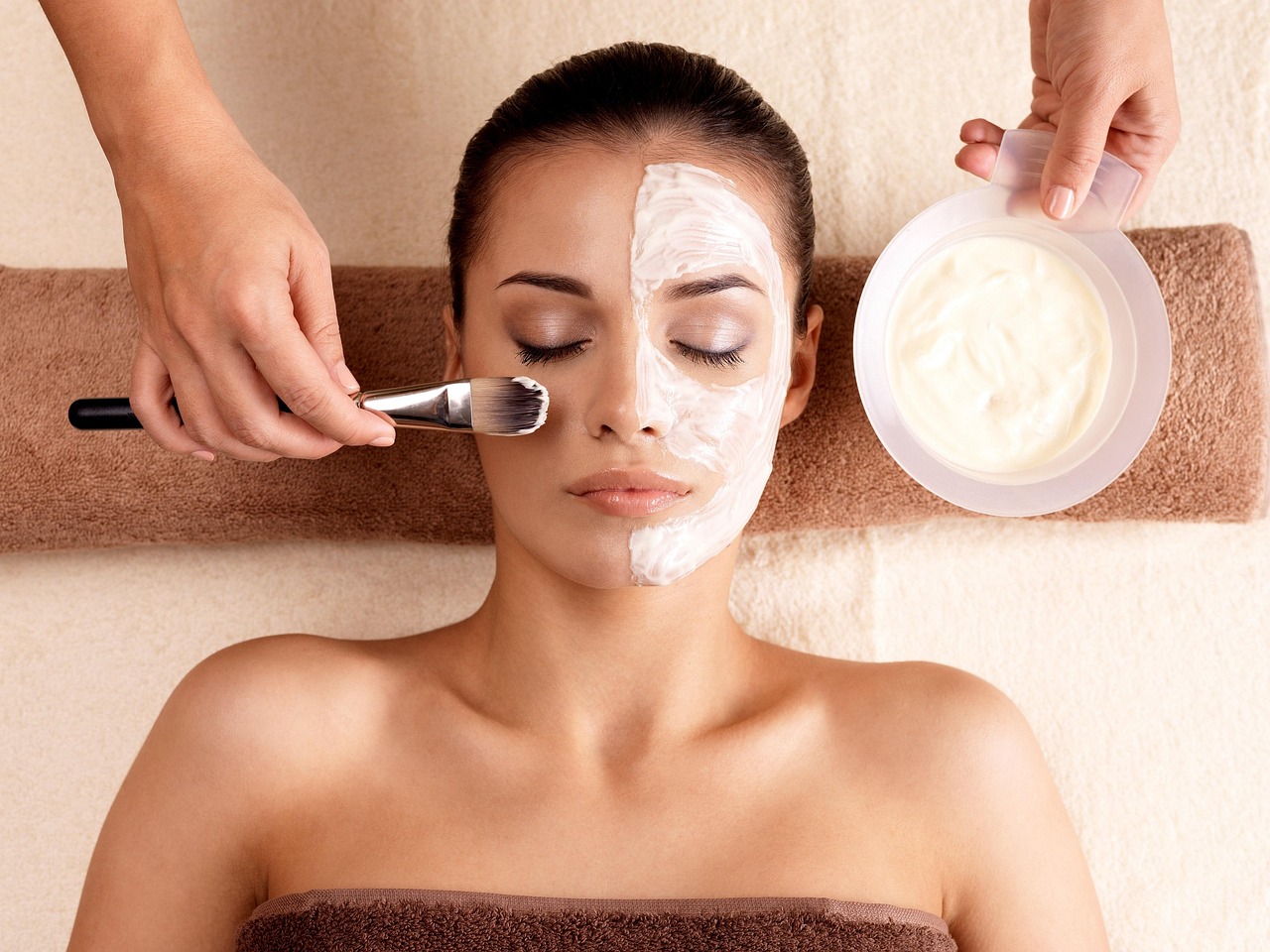Asian massage techniques have been practiced for centuries, offering a holistic approach to wellness that is deeply rooted in cultural traditions. This article delves into the diverse array of Asian massage techniques, highlighting their numerous benefits and how they can significantly enhance your daily wellness routine. Discover how these ancient practices can help you achieve relaxation, alleviate stress, and improve your overall health.
Understanding Asian Massage Techniques
Asian massage encompasses a variety of methods, each with its unique philosophy and technique. These practices aim to balance the body’s energy, often referred to as Qi in Chinese medicine, and promote relaxation through skilled touch and manipulation.
The Benefits of Asian Massage for Wellness
- Stress Relief: One of the primary benefits of Asian massage is its ability to reduce stress and promote a sense of calm.
- Improved Circulation: Techniques used in these massages enhance blood flow, which is vital for overall health.
- Enhanced Flexibility: Many Asian massage styles incorporate stretching, which increases flexibility and reduces muscle tension.
- Pain Management: Targeted techniques can help alleviate chronic pain and discomfort.
- Mental Well-Being: Regular sessions can contribute to improved mood and mental clarity.
Sparking Interest: Shiatsu and Its Unique Approach
Shiatsu, a traditional Japanese massage technique, utilizes finger pressure on specific points to restore energy balance. This method is grounded in the principles of traditional Chinese medicine, emphasizing the flow of Qi throughout the body.
Exploring Tui Na: A Chinese Healing Method
Tui Na combines acupressure and manipulation, focusing on restoring balance and promoting healing. Techniques such as rolling and pressing are employed to release muscle tension and enhance energy flow.
Discovering Thai Massage: A Unique Blend of Techniques
Thai massage integrates acupressure with yoga-like stretches, promoting flexibility while balancing energy. This technique is particularly beneficial for individuals with active lifestyles, as it helps relieve muscle tension and improve circulation.
Ayurvedic Massage: An Ancient Indian Tradition
Rooted in Ayurveda, this massage style utilizes warm oils and specific strokes to balance the body’s doshas. It emphasizes a personalized approach, considering individual constitution and seasonal changes to enhance therapeutic effects.
Choosing the Right Asian Massage Technique for You
When selecting an Asian massage technique, it’s essential to consider your personal health goals, physical condition, and comfort level with different styles. Each method offers unique benefits, so understanding your needs will help you make an informed choice.
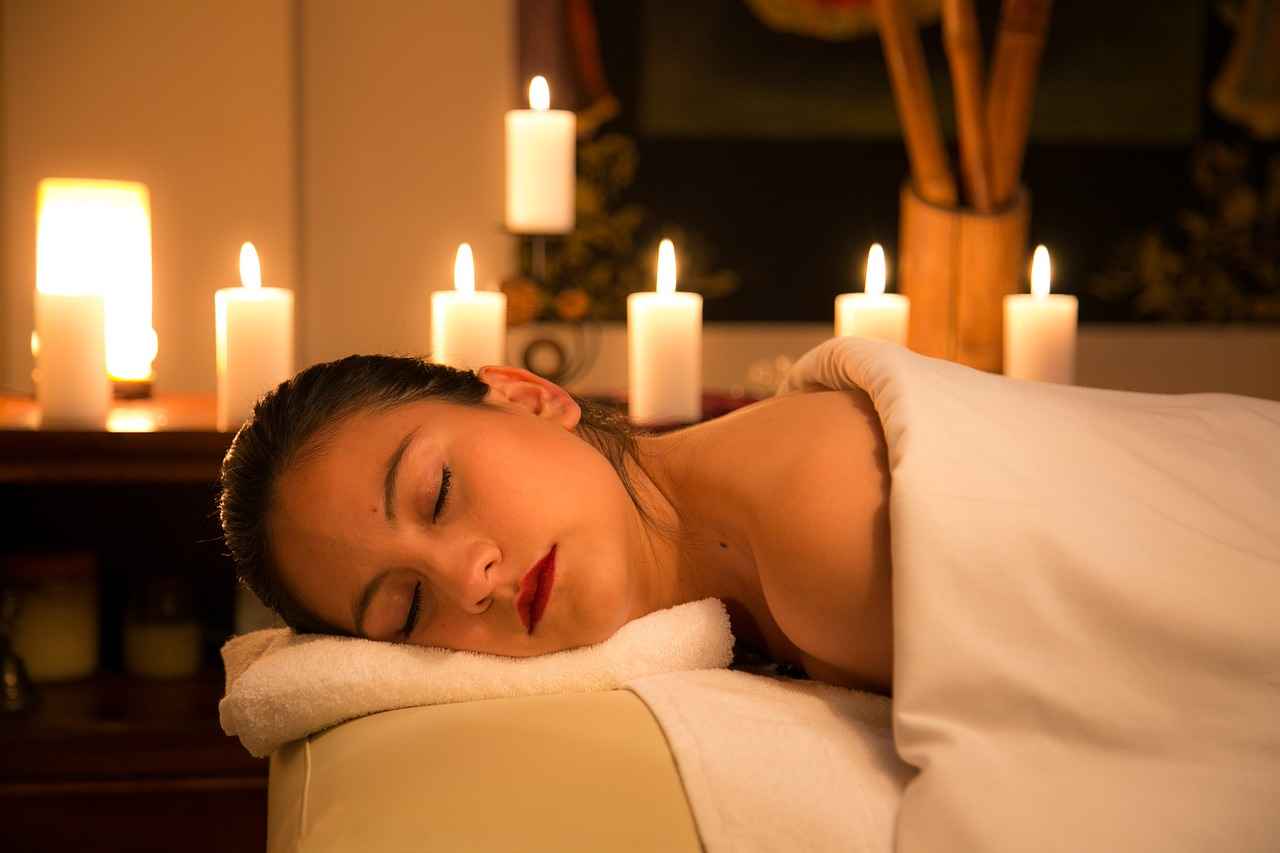
Understanding Asian Massage Techniques
Asian massage techniques are a rich tapestry of practices that have evolved over centuries, deeply rooted in traditional healing philosophies. These techniques are not merely about physical manipulation; they are holistic approaches aimed at harmonizing the body’s energy, often referred to as Qi or Prana, depending on the cultural context. By focusing on this energy balance, these methods promote relaxation and well-being, making them integral to daily wellness routines.
Among the most recognized methods are Shiatsu, Tui Na, Thai Massage, and Ayurvedic Massage. Each of these techniques incorporates unique elements that cater to various health needs and preferences.
- Shiatsu: Originating from Japan, this technique utilizes finger pressure on specific points along the body’s meridians. It aims to release blockages and restore energy flow, leading to enhanced physical and emotional health.
- Tui Na: This Chinese practice combines acupressure and manipulation, focusing on muscle tension and energy pathways. Techniques such as rolling and pressing are integral to its approach, promoting healing and balance.
- Thai Massage: Known for its dynamic stretches and acupressure, Thai massage encourages flexibility and relaxation. It is performed on a mat, allowing for deeper engagement and a full-body experience.
- Ayurvedic Massage: Rooted in ancient Indian traditions, this technique emphasizes the balance of the body’s doshas. It uses warm oils and tailored strokes to promote detoxification and emotional equilibrium.
Understanding these diverse techniques allows individuals to choose the right approach for their wellness journey. Whether seeking relief from stress, improved circulation, or enhanced flexibility, Asian massage techniques offer a pathway to holistic health. With each practice carrying its unique philosophy and methodology, exploring these options can lead to a more balanced and fulfilling lifestyle.

The Benefits of Asian Massage for Wellness
Asian massage techniques have gained recognition worldwide for their profound effects on both physical and mental well-being. These ancient practices not only serve as a means of relaxation but also offer a myriad of health benefits that can enhance daily life.
Stress Relief is one of the most significant advantages of Asian massage. In today’s fast-paced world, stress has become a common ailment. Techniques such as Shiatsu and Tui Na focus on releasing tension in the body, promoting a state of calm and tranquility. By alleviating stress, individuals can experience improved mood and mental clarity.
Another crucial benefit is improved circulation. Many Asian massage styles, including Thai massage, utilize movements that stimulate blood flow. Enhanced circulation not only aids in the delivery of oxygen and nutrients to vital organs but also helps in the removal of toxins from the body. This can lead to increased energy levels and overall vitality.
Furthermore, these techniques are known for their ability to enhance flexibility. Regular sessions can lead to better muscle elasticity and joint mobility, which is particularly beneficial for those engaged in physical activities or sports. The stretching components of Thai massage, for instance, encourage a greater range of motion, reducing the risk of injuries.
Asian massage also plays a vital role in pain management. Techniques such as acupressure can target specific areas of discomfort, providing relief from chronic pain conditions like headaches, back pain, and arthritis. This targeted approach can lead to a significant reduction in pain levels, improving the quality of life for many individuals.
Lastly, engaging in these massage practices can promote overall mental well-being. The combination of physical touch and mindful relaxation fosters a deeper connection between body and mind, leading to improved emotional health. Many individuals report feeling more balanced and centered after receiving Asian massage treatments.
In summary, the benefits of Asian massage extend far beyond relaxation. By incorporating these techniques into your wellness routine, you can experience enhanced stress relief, improved circulation, greater flexibility, effective pain management, and a boost in mental well-being.

Shiatsu: The Japanese Pressure Point Therapy
Shiatsu is not just a massage technique; it is a holistic approach to wellness that stems from traditional Japanese practices. This method, which translates to “finger pressure,” employs targeted pressure on specific points of the body, known as tsubos, to promote healing and restore energy balance. The philosophy behind Shiatsu is deeply rooted in the principles of traditional Chinese medicine, particularly the concept of Qi (or energy) flowing through the body. By applying pressure to these points, practitioners aim to unblock energy pathways, thereby alleviating a variety of ailments.
One of the unique aspects of Shiatsu is its focus on the body’s natural rhythms and the interconnectedness of physical and emotional health. Practitioners believe that stress and emotional turmoil can manifest as physical discomfort, and Shiatsu seeks to address these issues holistically. The technique not only alleviates tension but also encourages relaxation and mental clarity.
Shiatsu incorporates a variety of techniques, including kneading, stretching, and tapping. Each method is carefully designed to stimulate specific pressure points, enhancing the therapeutic effects. For instance, gentle stretching can improve flexibility and range of motion, while firm pressure can relieve tight muscles and improve circulation.
Many individuals turn to Shiatsu for its numerous health benefits. Regular sessions can lead to reduced stress levels, improved sleep quality, and enhanced overall well-being. Additionally, Shiatsu is often recommended for managing chronic pain, headaches, and digestive issues. As more people seek natural and non-invasive ways to enhance their health, Shiatsu continues to gain popularity worldwide.
In conclusion, Shiatsu is a powerful therapeutic technique that offers a unique blend of physical and emotional healing. By understanding its principles and techniques, individuals can harness the benefits of this ancient practice to improve their daily wellness.
The Philosophy Behind Shiatsu
Shiatsu, a therapeutic massage technique originating from Japan, is deeply intertwined with the principles of traditional Chinese medicine. Central to this practice is the concept of Qi, or life energy, which flows through the body along specific pathways known as meridians. This philosophy posits that maintaining a balanced flow of Qi is essential for physical, emotional, and spiritual well-being.
Understanding the philosophy behind Shiatsu is crucial for appreciating its therapeutic effects. When the flow of Qi is disrupted, it can lead to various health issues, including stress, pain, and fatigue. Shiatsu aims to restore this balance through the application of pressure on specific points, often referred to as acupressure points. By stimulating these points, practitioners can help release blockages, enhance circulation, and promote relaxation.
The practice of Shiatsu is not merely a physical treatment; it also emphasizes a holistic approach to health. Shiatsu therapists often assess a client’s overall condition, taking into account their emotional state, lifestyle, and physical symptoms. This comprehensive assessment allows for a tailored treatment plan that addresses the individual’s unique needs.
| Key Concepts of Shiatsu | Description |
|---|---|
| Qi | The vital energy that flows through the body, essential for health. |
| Meridians | Pathways through which Qi flows; blockages can lead to health issues. |
| Acupressure Points | Specific points on the body where pressure is applied to restore balance. |
In summary, Shiatsu is a profound practice that integrates the ancient wisdom of Chinese medicine with modern therapeutic techniques. It encourages a deeper understanding of one’s body and promotes a sense of harmony and peace. By embracing this philosophy, individuals can experience not only physical relief but also a greater connection to their overall health and wellness.
Techniques Used in Shiatsu
Shiatsu, a traditional Japanese massage technique, employs a variety of methods to promote healing and relaxation. The core principle of Shiatsu is to apply pressure on specific points throughout the body, which correspond to energy pathways known as meridians. By stimulating these points, Shiatsu aims to restore balance and enhance overall well-being.
Among the techniques utilized in Shiatsu, kneading is one of the most fundamental. This method involves rhythmic pressing and squeezing of the muscles, which helps to relieve tension and improve circulation. Kneading not only relaxes the muscles but also stimulates the flow of Qi, or vital energy, throughout the body.
Another essential technique is tapping, which involves gentle, rapid strikes with the fingers or palms. This technique is designed to invigorate the body and stimulate the nervous system. Tapping can be particularly effective in enhancing alertness and reducing fatigue, making it a great choice for those seeking a quick energy boost.
Stretching is also an integral part of Shiatsu practice. This technique involves gentle, assisted movements that help to increase flexibility and release tightness in the muscles. Stretching not only enhances physical mobility but also promotes a sense of relaxation and calmness, contributing to mental clarity.
- Kneading: Relieves muscle tension and improves blood flow.
- Tapping: Invigorates the body and stimulates the nervous system.
- Stretching: Increases flexibility and promotes relaxation.
Each of these techniques is tailored to the individual’s needs, ensuring a personalized experience that maximizes therapeutic benefits. Shiatsu practitioners often assess the client’s condition before applying these methods, allowing for a customized approach that addresses specific health concerns.
In summary, the diverse techniques used in Shiatsu, including kneading, tapping, and stretching, work synergistically to promote healing and relaxation. By understanding and applying these methods, individuals can experience the profound benefits of this ancient practice.
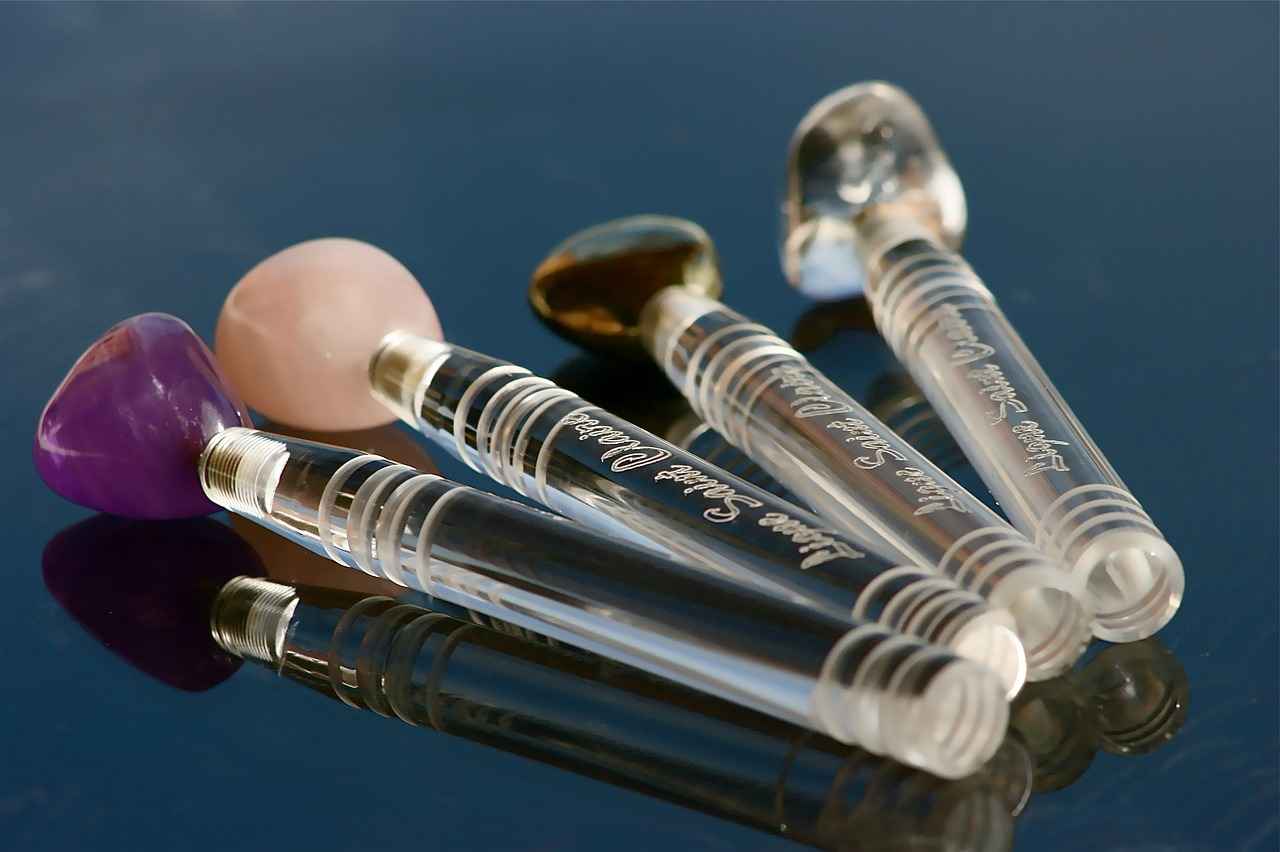
Tui Na: The Chinese Massage Method
Tui Na is a time-honored Chinese therapeutic massage that plays a vital role in traditional Chinese medicine (TCM). Unlike typical massages that primarily focus on relaxation, Tui Na integrates acupressure and manipulation techniques to address specific health issues. This method is designed to restore balance within the body, promoting healing and overall wellness.
The practice of Tui Na is based on the concept of Qi (pronounced “chee”), which refers to the vital energy that flows through the body. Practitioners believe that blockages or imbalances in Qi can lead to physical and emotional ailments. By employing various hand techniques, Tui Na aims to release these blockages, facilitating the smooth flow of energy and enhancing the body’s natural healing capabilities.
- Rolling: This technique involves the use of the palms to roll over the skin, promoting relaxation and circulation.
- Pressing: Targeted pressure is applied to specific acupoints, similar to acupressure, to alleviate pain and tension.
- Grasping: This method involves kneading and squeezing muscles to release tightness and improve flexibility.
The therapeutic effects of Tui Na extend beyond mere relaxation. Some of the notable health benefits include:
- Pain Relief: Tui Na is effective in managing chronic pain conditions such as back pain, arthritis, and headaches.
- Enhanced Immune Function: Regular sessions can boost the immune system, helping the body fend off illnesses.
- Improved Sleep Quality: By reducing stress and promoting relaxation, Tui Na can lead to better sleep patterns.
Incorporating Tui Na into your wellness routine can significantly enhance your quality of life. Whether you seek relief from specific ailments or simply wish to maintain balance in your life, Tui Na offers a holistic approach to health and well-being.
Key Techniques in Tui Na
Tui Na is a profound and ancient Chinese therapeutic massage technique that plays a vital role in traditional Chinese medicine. It is characterized by its unique approach to healing, which involves a variety of manual techniques aimed at promoting overall wellness. One of the core aspects of Tui Na is its emphasis on energy flow and muscle relaxation, which are achieved through a series of specialized techniques.
The primary techniques utilized in Tui Na include:
- Rolling: This technique involves smooth, gliding motions across the skin, which helps to loosen tight muscles and stimulate blood circulation. Rolling is particularly effective in easing muscle tension and enhancing relaxation.
- Pressing: By applying firm pressure to specific points on the body, practitioners can help release blockages in energy flow. This method not only alleviates pain but also promotes a sense of calm and balance.
- Grasping: This technique involves a gentle pulling or squeezing motion, which can help to stretch and realign the body’s musculoskeletal system. Grasping is beneficial for relieving deep-seated tension and improving flexibility.
Each of these techniques is designed to work in harmony with the body’s natural energy pathways, known as meridians. By targeting these pathways, Tui Na aims to restore balance and facilitate the body’s innate healing processes. Regular practice of Tui Na can lead to enhanced mobility, reduced stress levels, and improved overall health.
Furthermore, Tui Na is not just about physical manipulation; it also incorporates elements of mindfulness and breath awareness. This holistic approach ensures that the benefits extend beyond the physical realm, promoting emotional and mental well-being as well.
Overall, Tui Na is a comprehensive massage technique that utilizes rolling, pressing, and grasping to effectively release muscle tension and improve energy flow throughout the body, making it a valuable addition to anyone’s wellness routine.
Health Benefits of Tui Na
Tui Na, a traditional Chinese therapeutic massage, offers a multitude of health benefits that can significantly enhance overall wellness. This ancient practice is not only about relaxation but also focuses on restoring balance in the body, making it a powerful tool for health improvement.
One of the primary benefits of Tui Na is its ability to provide pain relief. Many individuals suffering from chronic pain conditions, such as arthritis or lower back pain, have reported significant reductions in discomfort following regular Tui Na sessions. The massage techniques employed, which include kneading, rolling, and acupressure, work to release muscle tension and improve blood circulation, contributing to a decrease in pain levels.
Another notable advantage of Tui Na is its role in enhancing immune function. By stimulating specific acupressure points, Tui Na can help to boost the body’s natural defenses. This is particularly beneficial during cold and flu seasons, as a strengthened immune system can better combat illness.
Moreover, Tui Na has been shown to improve sleep quality. Many practitioners experience deeper, more restorative sleep after receiving Tui Na treatments. The relaxation induced by the massage helps to alleviate stress and anxiety, which are common culprits of sleep disturbances.
Regular sessions of Tui Na can also contribute to overall wellness. The holistic approach of this massage technique encourages not only physical health but also mental and emotional balance. By fostering relaxation and reducing stress, Tui Na supports a healthier lifestyle, encouraging individuals to engage more fully in their daily activities.
In summary, the health benefits of Tui Na extend far beyond simple relaxation. With its proven ability to relieve pain, enhance immune function, and improve sleep quality, incorporating Tui Na into your wellness routine can lead to significant improvements in overall health and well-being.
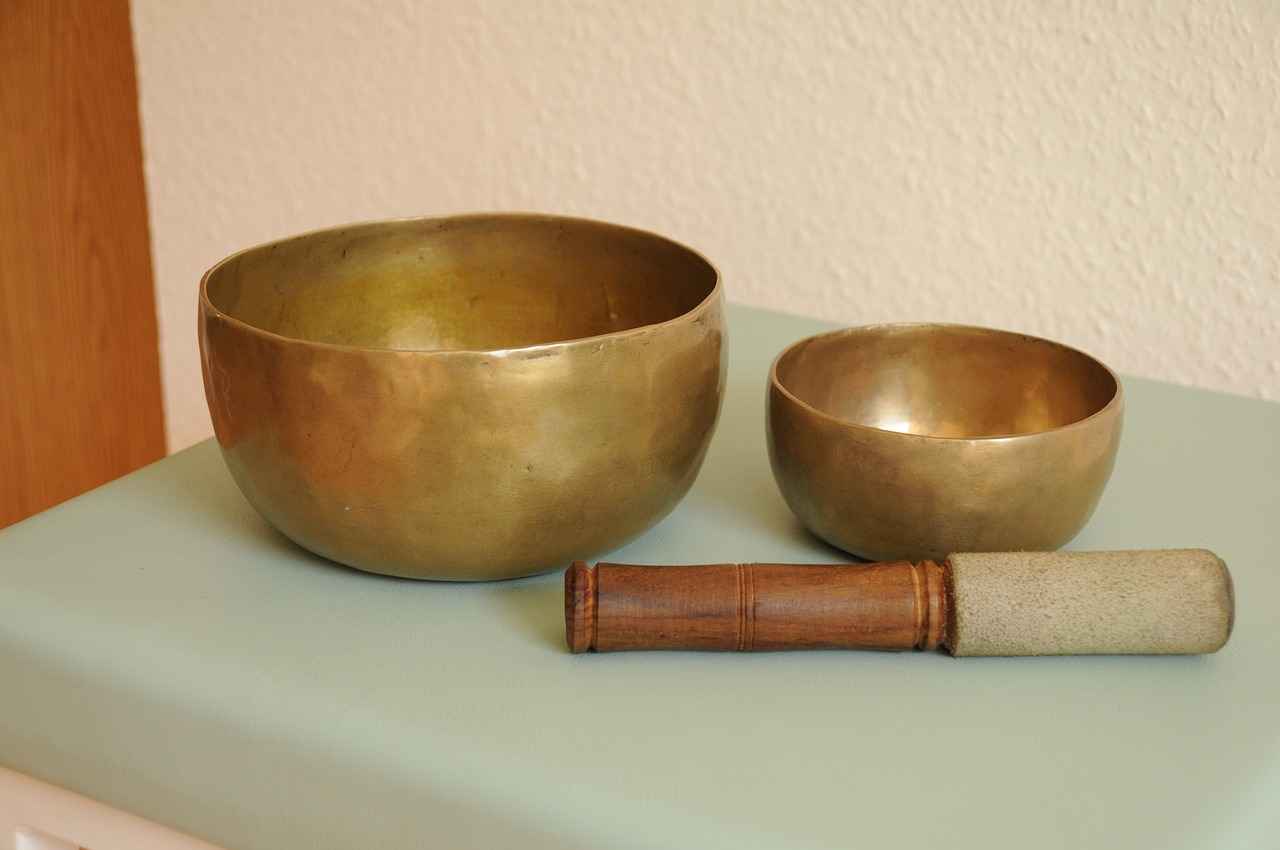
Thai Massage: The Art of Stretching
Thai massage is a unique form of bodywork that integrates elements of acupressure and assisted yoga-like stretches. This ancient practice, originating from Thailand, is designed not only to promote flexibility but also to enhance overall relaxation and balance the body’s energy systems.
Unlike traditional massage therapies that typically involve the client lying on a table, Thai massage is performed on a mat on the floor. This allows the practitioner to use their body weight effectively, applying pressure and guiding the recipient through a series of stretches. The therapist’s movements are rhythmic and fluid, creating a dynamic experience that feels almost like a dance.
One of the primary benefits of Thai massage is its ability to improve flexibility. The gentle stretching techniques help to elongate muscles and increase range of motion, making it an excellent option for athletes or anyone looking to enhance their physical performance. Additionally, the acupressure aspects target specific energy points, promoting a sense of well-being and relaxation.
Incorporating breathwork is another essential aspect of Thai massage. Practitioners often guide clients to synchronize their breathing with the movements, which can enhance the relaxation response and deepen the overall experience. This focus on breath helps to clear the mind, reduce stress, and foster a sense of calm.
The benefits of Thai massage extend beyond physical relaxation. Many individuals report feeling a profound sense of mental clarity and emotional balance following a session. Regular practice can lead to improved circulation, reduced muscle tension, and a greater sense of connectedness to one’s body.
In summary, Thai massage is not just a physical treatment; it is a holistic approach to wellness that combines stretching, acupressure, and mindful breathing. Whether you are seeking to relieve tension, increase flexibility, or simply unwind, Thai massage offers a comprehensive pathway to enhance your daily wellness.
The Unique Approach of Thai Massage
Thai massage is a distinctive form of bodywork that stands out due to its emphasis on both stretching and acupressure techniques. Practiced on a comfortable mat, this method allows the therapist to fully leverage their body weight, creating a more profound and effective stretching experience. Unlike other massage styles that typically involve the client lying on a table, Thai massage encourages a dynamic interaction between the therapist and recipient.
This unique approach not only enhances flexibility but also facilitates deeper muscle relaxation. By using their hands, elbows, knees, and feet, practitioners can apply varying levels of pressure and stretch the body in ways that promote energy flow and balance. This method is particularly beneficial for individuals who lead active lifestyles, as it helps to alleviate muscle tension and improve overall mobility.
Moreover, the incorporation of yoga-like stretches into the treatment allows clients to experience a heightened sense of body awareness. As the therapist guides the recipient through a series of postures, it encourages mindfulness and relaxation, making it an ideal practice for stress relief. The rhythmic movements and deep stretches can also stimulate circulation, leading to an increase in oxygen and nutrient delivery to the muscles.
In addition to physical benefits, Thai massage is rooted in the belief that the body has energy pathways (known as Sen lines) that can be unblocked through specific techniques. This holistic approach not only addresses physical discomfort but also promotes emotional and spiritual well-being, making it a comprehensive form of therapy.
Ultimately, the unique approach of Thai massage offers an enriching experience that combines physical, mental, and emotional benefits. Whether you are seeking to enhance flexibility, reduce stress, or simply indulge in a unique form of relaxation, Thai massage stands out as a powerful tool for daily wellness.
Benefits of Thai Massage
Thai massage is a unique and ancient practice that offers a multitude of benefits for both the body and mind. This holistic approach combines elements of acupressure, yoga, and meditation, making it particularly effective for individuals seeking to enhance their overall well-being.
One of the primary advantages of Thai massage is its ability to significantly increase flexibility. The assisted stretching techniques used during the massage help to elongate muscles and enhance joint mobility. This is particularly beneficial for those who engage in regular physical activity or sports, as it can lead to improved performance and reduced risk of injury.
In addition to flexibility, Thai massage is known for its capacity to improve circulation. The rhythmic movements and pressure applied during the massage stimulate blood flow throughout the body. Improved circulation not only aids in the delivery of oxygen and nutrients to cells but also promotes the efficient removal of toxins, contributing to overall health.
Furthermore, Thai massage is an excellent method for stress reduction. The combination of deep stretching, pressure point stimulation, and mindful breathing techniques encourages relaxation and a sense of peace. Many individuals find that regular sessions help to alleviate anxiety and tension, leading to improved mental clarity and emotional balance.
For those who experience muscle tension due to active lifestyles or sedentary work, Thai massage can provide significant relief. The targeted pressure and stretching techniques work to release tight muscles and alleviate discomfort, promoting a greater sense of physical well-being.
Overall, the benefits of Thai massage extend beyond the physical realm, offering a comprehensive approach to wellness that nurtures both body and mind. Whether you are looking to enhance your flexibility, improve circulation, or simply unwind from the stresses of daily life, Thai massage is a valuable practice to consider.
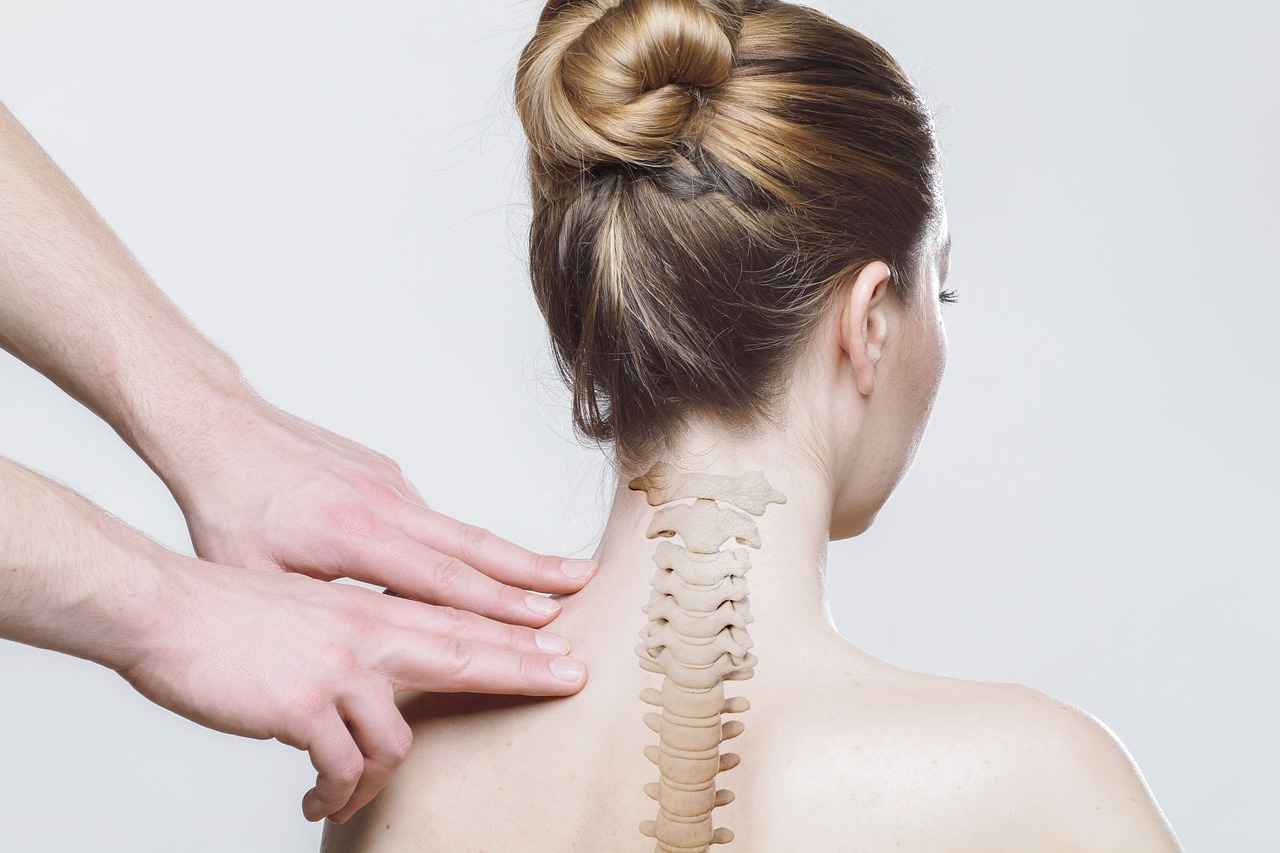
Ayurvedic Massage: The Indian Healing Tradition
Ayurvedic massage is a profound practice deeply embedded in the ancient healing traditions of India. This holistic approach centers around the concept of doshas, which are the three fundamental energies believed to govern physical and mental health: Vata, Pitta, and Kapha. By understanding and balancing these doshas, Ayurvedic massage aims to restore harmony within the body, leading to improved overall wellness.
The technique primarily utilizes warm herbal oils, carefully selected based on an individual’s unique constitution and current health conditions. The application of these oils, combined with specific massage strokes, not only nourishes the skin but also penetrates deeply into the tissues, facilitating the release of toxins and promoting relaxation.
- Abhyanga: A full-body massage using warm oil, promoting circulation and detoxification.
- Shirodhara: A soothing treatment where warm oil is poured over the forehead, calming the mind and enhancing mental clarity.
- Pindasveda: The use of warm herbal boluses to relieve muscle tension and improve joint mobility.
The benefits of Ayurvedic massage extend beyond mere relaxation. Regular practice can lead to:
- Detoxification: Assisting the body in eliminating accumulated toxins.
- Improved Digestion: Enhancing digestive health through the stimulation of abdominal organs.
- Emotional Balance: Promoting a sense of calm and emotional stability, reducing anxiety and stress levels.
Moreover, Ayurvedic massage is tailored to address individual needs, making it a personalized experience that can significantly enhance one’s quality of life. By integrating this ancient practice into your wellness routine, you can enjoy a multitude of physical and mental health benefits, fostering a deeper connection to your body and mind.
Principles of Ayurveda in Massage
Ayurvedic massage is a holistic approach that draws from the ancient wisdom of Ayurveda, a traditional Indian system of medicine. This practice is not merely about physical manipulation; it is a comprehensive method that considers the unique constitution of each individual, known as “dosha,” and the seasonal changes that can affect one’s health.
The principles of Ayurveda are deeply embedded in the practice of Ayurvedic massage. Each person is believed to have a unique combination of the three doshas: Vata, Pitta, and Kapha. These elements govern various physical and emotional characteristics. By understanding one’s dosha, practitioners can tailor the massage techniques and oils used, ensuring a more personalized and effective treatment.
Moreover, Ayurvedic massage emphasizes the importance of seasonal changes in maintaining balance and health. Different seasons can influence the body’s dosha, and as such, the massage techniques and oils may be adjusted accordingly. For instance, during the dry winter months, the use of warm, nourishing oils can help combat the effects of cold and dryness, while lighter oils may be preferred in the heat of summer to maintain energy levels and hydration.
| Dosha | Characteristics | Massage Focus |
|---|---|---|
| Vata | Dry, light, and irregular | Warm oils, soothing strokes |
| Pitta | Hot, intense, and sharp | Cooling oils, gentle pressure |
| Kapha | Heavy, slow, and steady | Stimulating techniques, invigorating oils |
By integrating these principles, Ayurvedic massage not only fosters physical healing but also promotes emotional and spiritual well-being. The personalized nature of this practice enhances its therapeutic effects, making it a powerful tool for achieving overall wellness. Each session is designed to align with the individual’s needs, ensuring that the benefits are maximized.
In summary, Ayurvedic massage is a profound practice that utilizes the principles of Ayurveda to create a unique and personalized experience. By considering individual constitution and seasonal variations, this approach significantly enhances the effectiveness of the massage, promoting holistic health and vitality.
Benefits of Ayurvedic Massage
Ayurvedic massage is a holistic therapy deeply rooted in the ancient Indian healing system of Ayurveda. This practice emphasizes the importance of balancing the body’s energies, or doshas, to promote overall health and well-being. The benefits of Ayurvedic massage extend far beyond mere relaxation; they encompass physical, emotional, and spiritual dimensions that contribute to a healthier lifestyle.
One of the primary benefits of Ayurvedic massage is detoxification. The use of warm, herbal oils in the massage helps to stimulate the lymphatic system, facilitating the removal of toxins from the body. This process not only cleanses the body but also enhances skin health and boosts immunity.
Another significant advantage is the improvement of digestion. Ayurvedic massage techniques, particularly those targeting the abdominal area, can stimulate digestive organs and enhance metabolic processes. This can lead to better nutrient absorption, reduced bloating, and alleviation of gastrointestinal discomfort.
Moreover, Ayurvedic massage plays a crucial role in enhancing emotional balance. The rhythmic strokes and soothing oils used in this therapy help to calm the mind, reduce stress, and alleviate anxiety. Regular sessions can lead to improved mood and emotional resilience, fostering a sense of inner peace.
In addition to these benefits, consistent practice of Ayurvedic massage can lead to long-term wellness and vitality. By addressing the root causes of physical and emotional imbalances, this therapy promotes a state of harmony within the body. This holistic approach encourages individuals to maintain a balanced lifestyle, which is essential for sustained health.
- Detoxification: Cleanses the body of toxins.
- Improved Digestion: Enhances metabolic function.
- Emotional Balance: Reduces stress and anxiety.
- Long-term Wellness: Promotes overall vitality.
In conclusion, the multifaceted benefits of Ayurvedic massage make it a valuable addition to any wellness routine. By integrating this ancient practice into your life, you can experience profound improvements in both physical and emotional health.

Choosing the Right Asian Massage Technique for You
Choosing the right Asian massage technique can be a transformative experience for your overall wellness. With a plethora of options available, it’s essential to identify the method that aligns best with your individual needs and preferences. Here are some key considerations to help guide your decision-making process:
- Health Goals: What do you hope to achieve through massage? Whether it’s stress relief, pain management, or enhancing flexibility, understanding your objectives can help narrow down suitable techniques.
- Physical Condition: Your current physical state plays a crucial role. If you have specific injuries or chronic conditions, consult a healthcare professional to determine the most beneficial massage style, such as Tui Na for pain relief or Shiatsu for energy balance.
- Comfort with Different Styles: Each massage technique offers a unique approach. For instance, if you prefer gentle pressure, Ayurvedic massage with its soothing strokes may be ideal. Conversely, if you enjoy deeper, more intense manipulation, Thai massage might be more suitable.
- Personal Preferences: Consider your comfort with the environment and the practitioner’s approach. Some individuals may feel more at ease in a serene, spa-like setting, while others might prefer the dynamic atmosphere of a traditional massage studio.
By taking into account these factors, you can make a more informed decision about which Asian massage technique will best serve your needs. Ultimately, the right choice will not only enhance your physical health but also contribute to your overall sense of well-being and relaxation.
Frequently Asked Questions
- What is the main purpose of Asian massage techniques?
Asian massage techniques aim to promote relaxation, relieve stress, and enhance overall wellness by balancing the body’s energy through touch and manipulation.
- How does Shiatsu differ from other massage styles?
Shiatsu focuses on applying finger pressure to specific points on the body, drawing from traditional Chinese medicine principles to restore energy balance and alleviate ailments.
- What are the unique benefits of Tui Na massage?
Tui Na offers benefits like pain relief, improved immune function, and better sleep quality, making it a holistic choice for overall wellness.
- Can Thai massage help with flexibility?
Absolutely! Thai massage incorporates yoga-like stretches that enhance flexibility while promoting relaxation and balancing energy.
- What is the significance of warm oils in Ayurvedic massage?
Warm oils in Ayurvedic massage are crucial as they help in detoxification, improve digestion, and promote emotional balance, tailored to individual needs.
- How do I choose the right Asian massage technique for me?
Consider your health goals, physical condition, and comfort level with different styles to find the Asian massage technique that best suits your needs.












